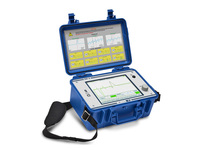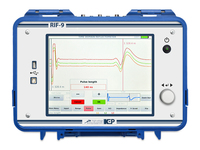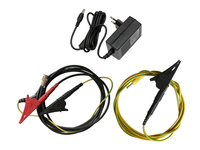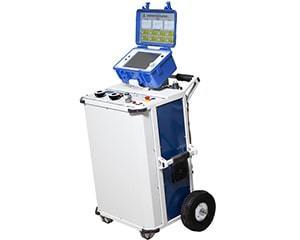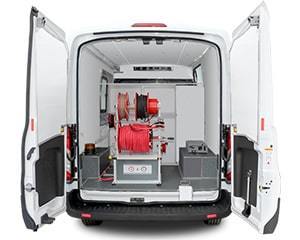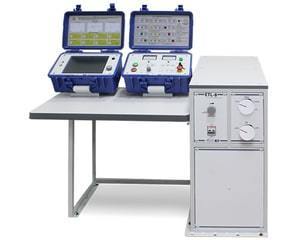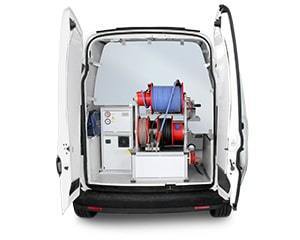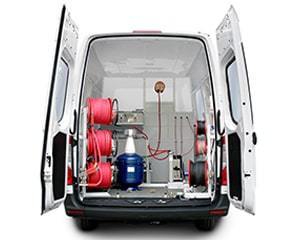RIF-9
TIME-DOMAIN REFLECTOMETER
Reflectometer RIF-9 can be used to detect, determine the type of and distance to various inhomogeneities (couplings, branching, etc.), determine the total length (including on drums and in bundles) as well as the velocity factor of balanced and unbalanced power cables and communication lines up to 120 km long.
When locating cable faults, the reflectometer RIF-9 can be used standalone for determining the distance to the points of low-resistance cable defects (which formed, for example, naturally or in the process of burning insulation in the damaged area) as well as in conjunction with a high-voltage source or a surge generator for fault pre-location with high-voltage methods of impulse arc reflection, impulse current, and voltage decay.
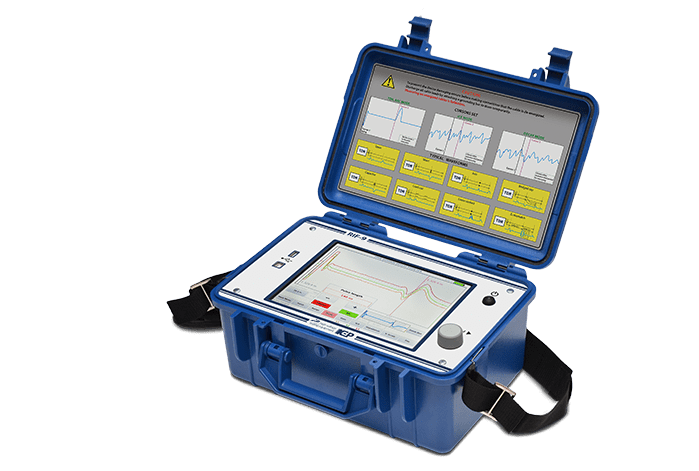
ALL MAIN PRE-LOCATION METHODS

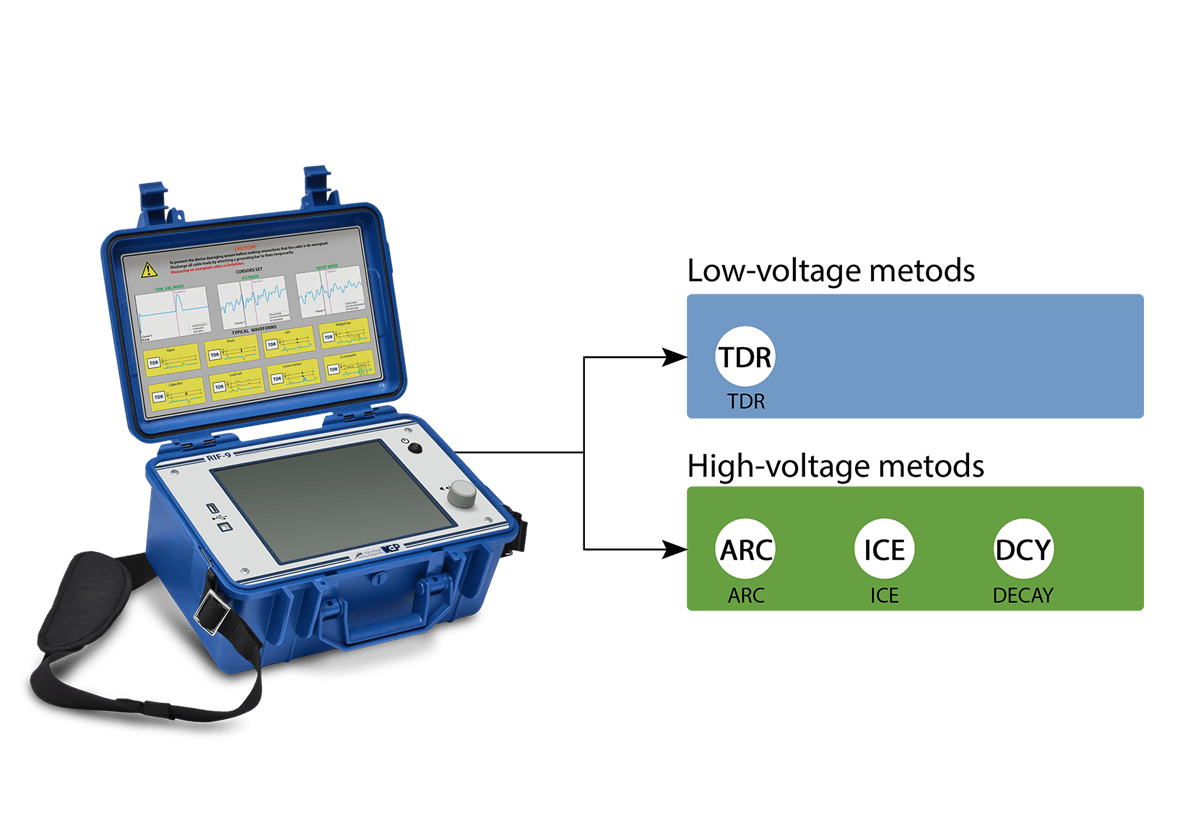
Low-voltage method
- TDR (time-domain reflectometry): detecting and determining the distance to various low-resistance faults, breaks, inhomogeneities (couplings, branches, etc.), determining the total length (including on drums and in coils), as well as the velocity factor of balanced and unbalanced power cables and communication lines.
High-voltage methods (when combined with a surge wave generator / thumper in ETL cable test van or SWG mobile cable test and fault location system)
- ARC/ARC multi-shot (single impulse / multiple impulse arc reflection method): determining the distance to high-resistance and unstable faults.
- ICE (impulse current envelope method): localisation of high-resistance faults that cannot be converted to low-resistance ones by burning faulty insulation.
- DECAY (voltage wave oscillation method): detection of faults with high breakdown voltage.

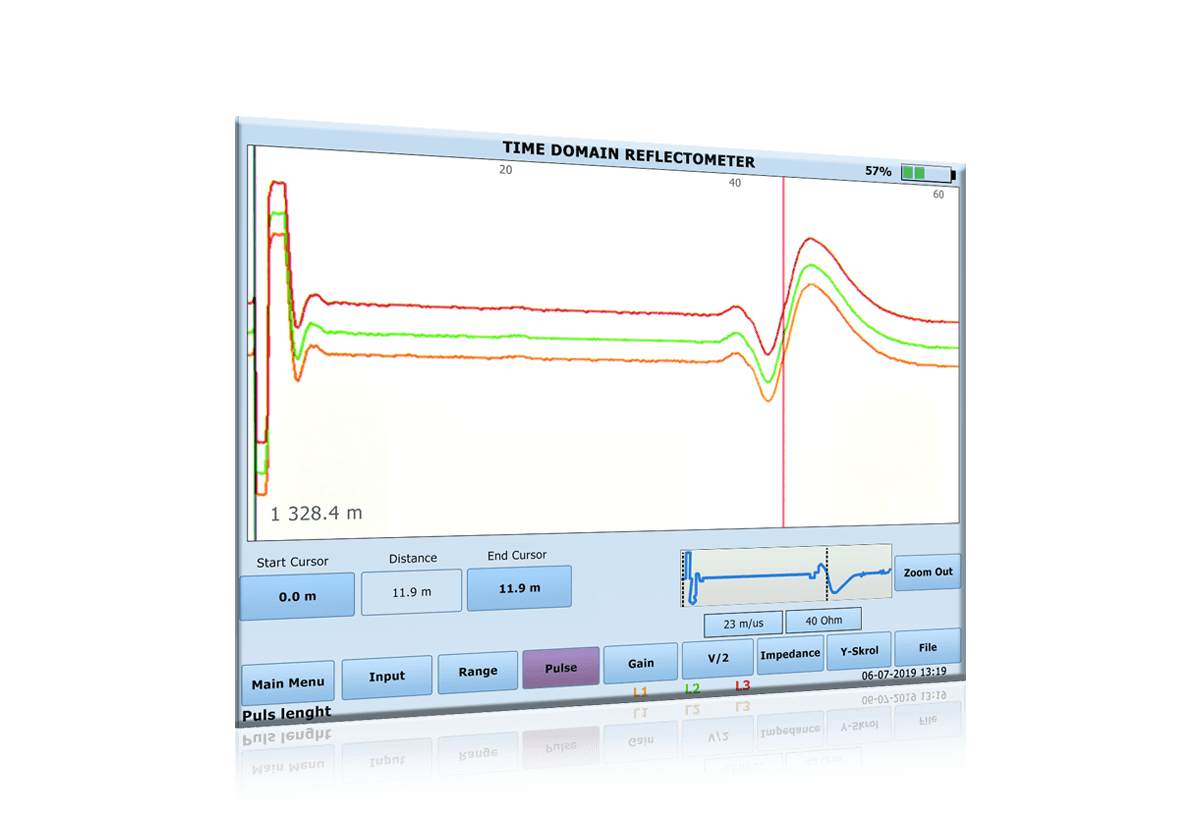
THREE PHASES


RIF-9 features three measurement channels allowing to display reflectograms from one, two or three cable phases at once in the time-domain reflectometry (TDR) mode.
This feature makes it possible to analyse and compare the different cable phases, which may be especially useful when identifying a particular failed phase or detecting low-resistance faults.
ARС MULTI-SHOT

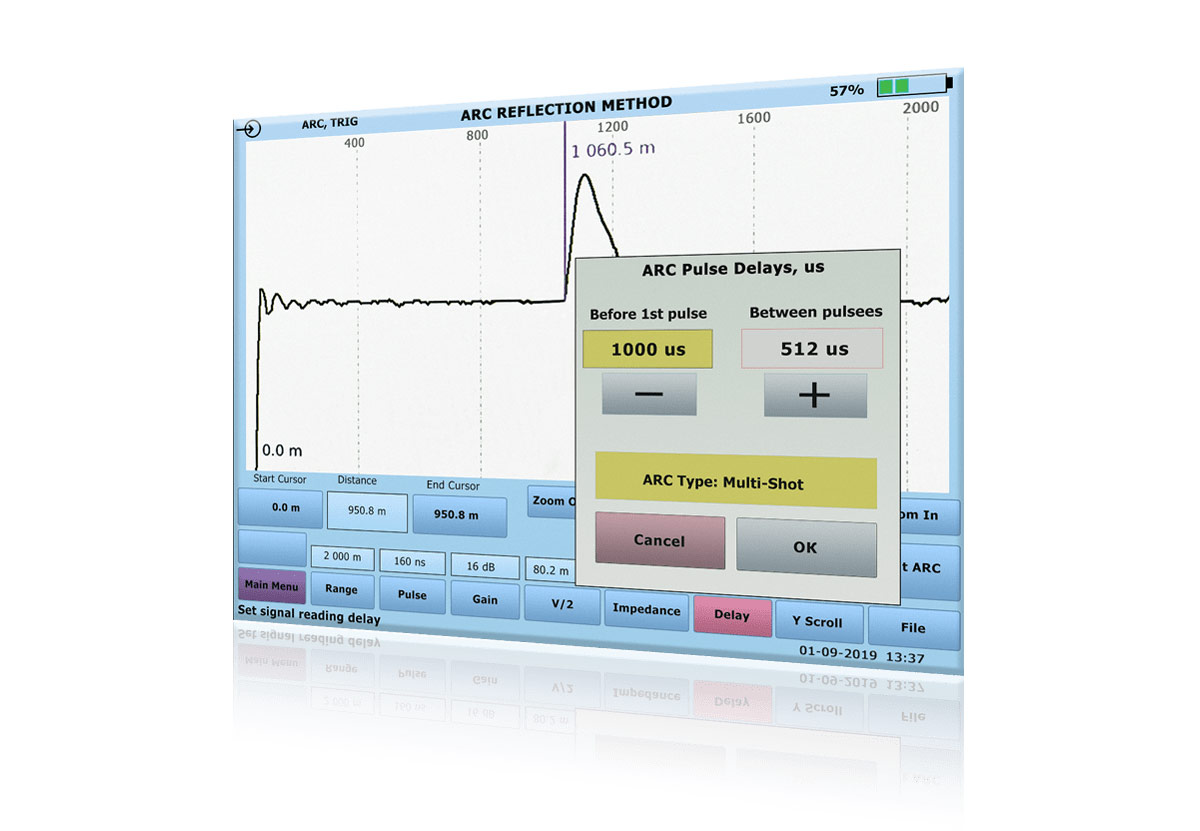
RIF-9 is equipped with ARC multi-shot technology, which allows to send up to 15 probing pulses per single surge generator discharge. This function simplifies prelocation in ARC mode by increasing the chance of obtaining a high-quality reflection off a flashover arc at the place of a fault.

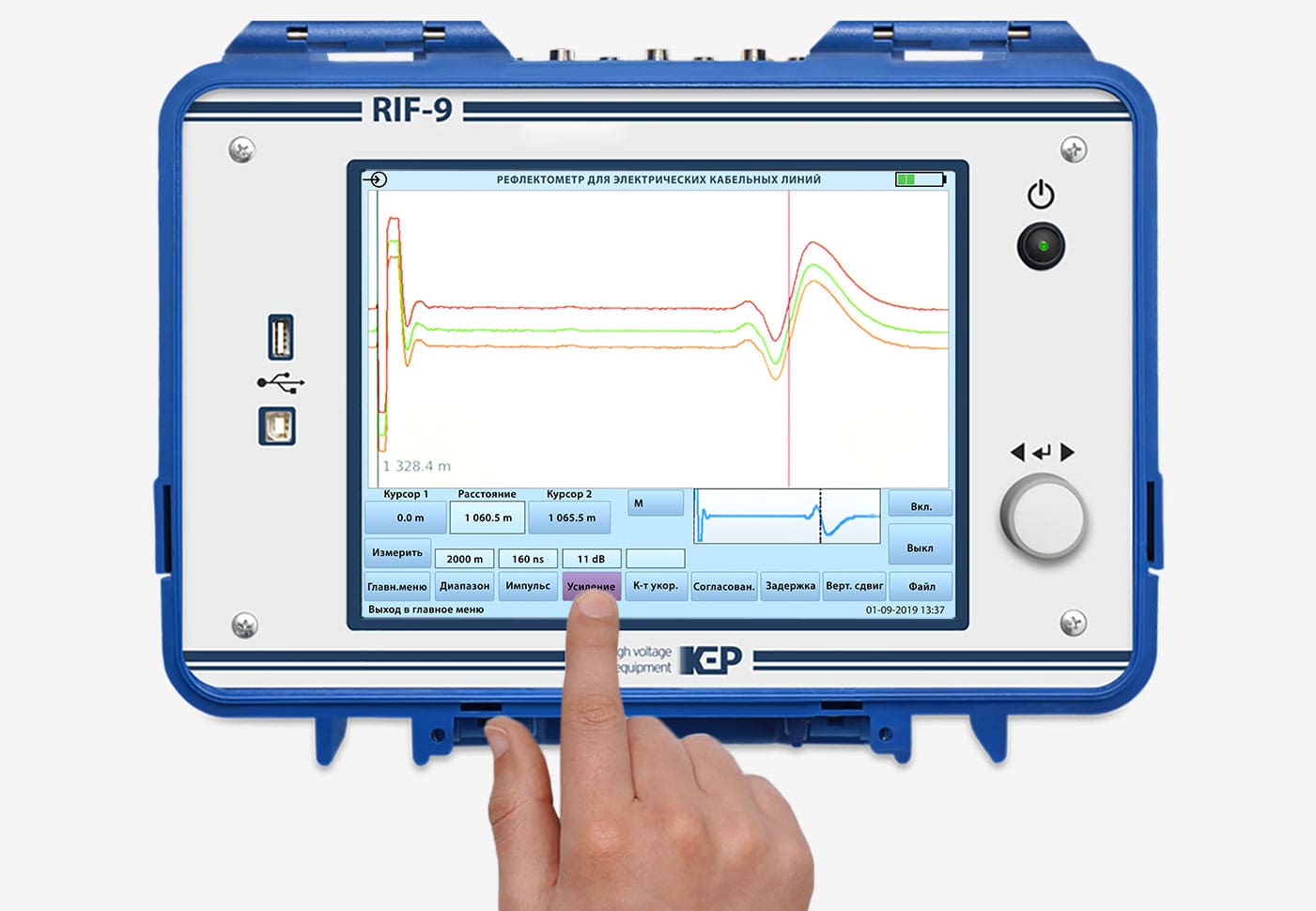
TOUCH CONTROL


Large 10.4" TFT colour display with touch control makes menu navigation, data entry and general device control easy and intuitive. High brightness and rich colour reproduction provide good visibility both in direct sunlight and in the dark.
AUTOMATIC INDICATION OF THE CABLE END AND DAMAGE PLACE

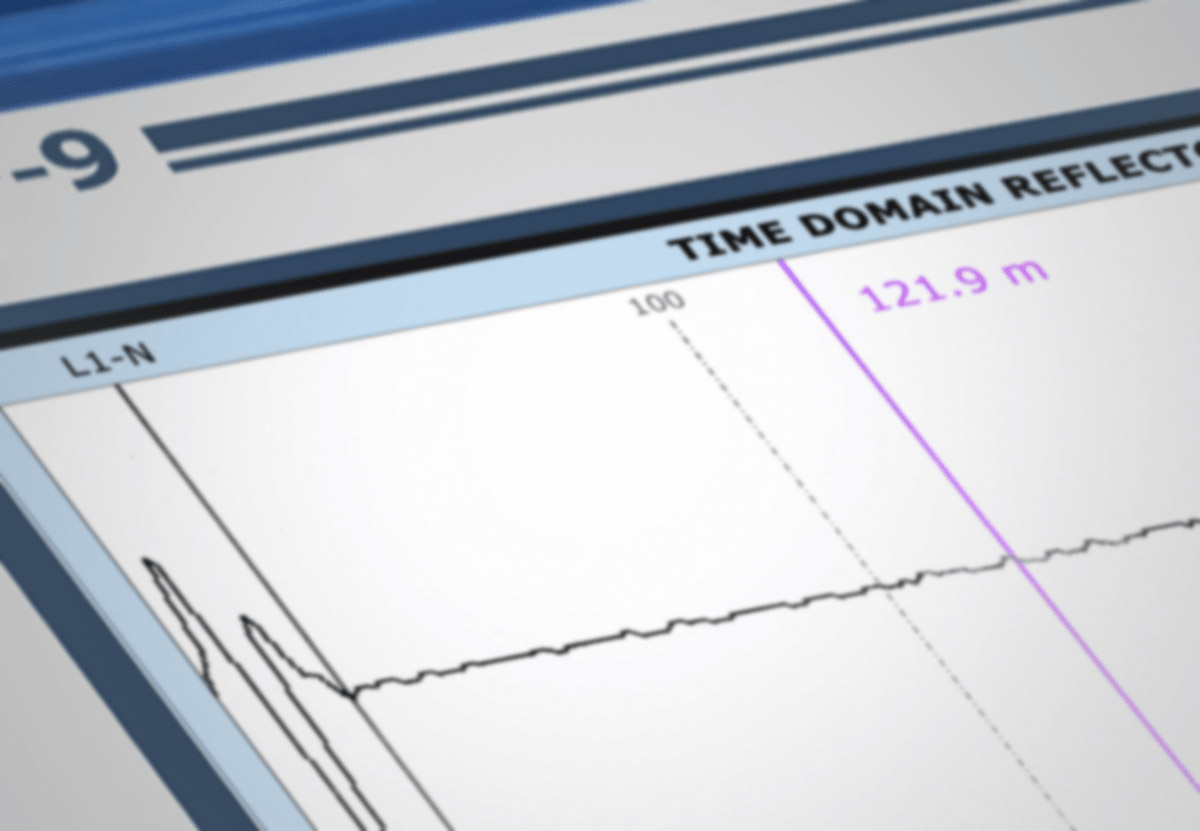
RIF-9 automatically analyses the obtained reflectogram and sets the cursor as necessary at the end of the cable or at the fault.
The instrument is also capable to analyse the reflectogram and automatically characterise the fault aiding the operator in the cable line maintenance.

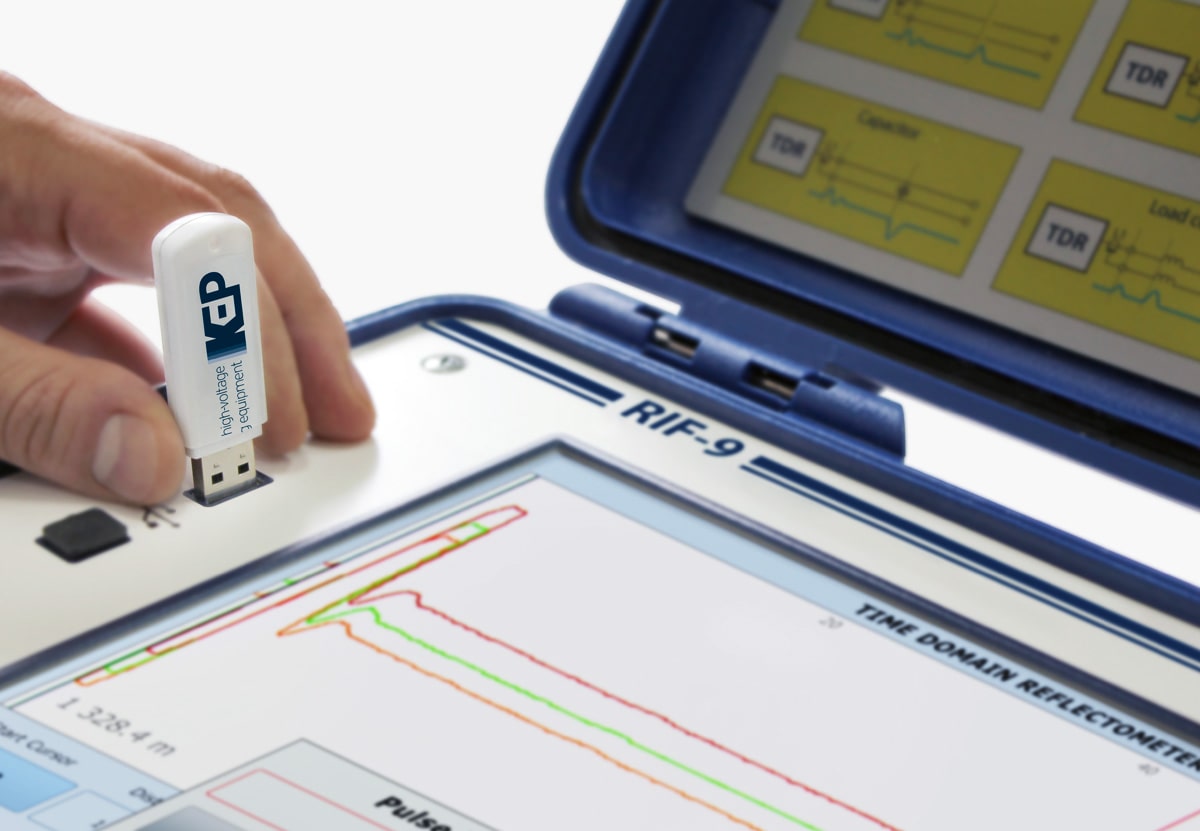
DATA IMPORT AND EXPORT


Up to 1000 parameterized reflectograms and up to 500 cable shortening ratio values can be stored in the RIF-9 memory. Saved reflectograms can be uploaded or copied to an external USB drive which can also be used to update the system firmware.
EXCLUSION OF MEASURING CABLES


Connection cables can be excluded from the final reflectometry measurements.
The measuring cables length is automatically subtracted from the obtained length of the measurement object, making it possible to see only the curve that matters.

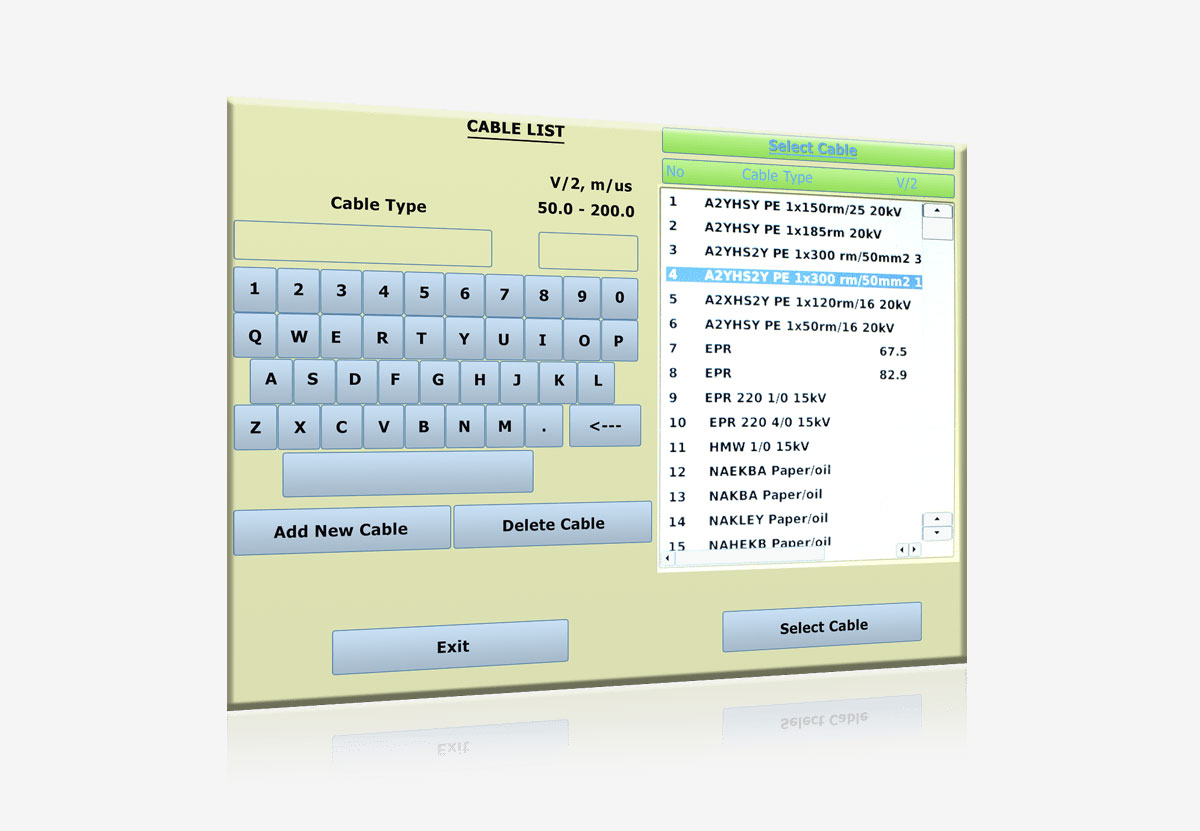
PRESETS


A table with shortening coefficients for various cables may be stored in the RIF-9 memory. To optimize subsequent measurements, an operator can select the required parameters, edit data and upload the list of cables from an external USB drive.
PORTABILITY

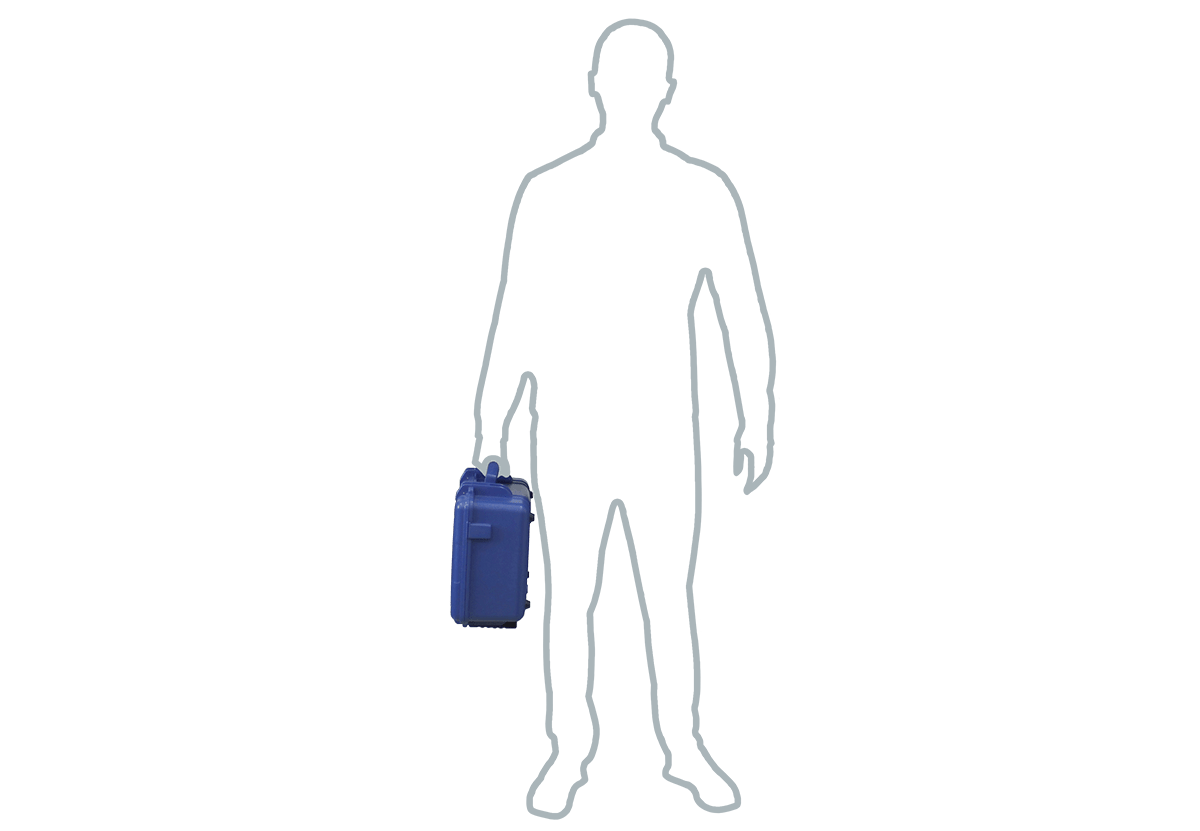
- The instrument is enclosed in a shock- and splash-proof case with a convenient shoulder strap.
- The weight of RIF-9 (with built-in battery) is only 8 kg.
- Device can be powered from the internal rechargeable battery or the mains (via a power adapter).
- Continuous operation from the battery – up to 6 hours.

| Pulse reflection method | Available methods (standalone use) | ■ TDR (impulse reflection method) |
| Connection to a line | Direct | |
| Number of channels for simultaneous connection to a line | 3 | |
| Fault detection ranges (for velocity factor 1.50 or v/2 = 100 m/μs) | 0 … 60 / 120 / 250 / 500 / 1000 / 2000 / 5000 / 10 000 / 20 000 / 50 000 / 120 000 m | |
| Number of traces used for averaging | 1 … 64 | |
| Arc reflection method | Available methods (when used with a suitable surge wave generator) |
■ ARC (single impulse arc reflection method) ■ ARC multi-shot (multiple impulse arc reflection method) |
| Connection to a line | Via a voltage filtering coupler | |
| Number of channels for simultaneous connection to a line | 1 | |
| Number of traces per surge in ARC multi-shot mode | 1 … 15 | |
| Fault detection ranges (for velocity factor 1.50 or v/2 = 100 m/μs) | 0 … 60 / 120 / 250 / 500 / 1000 / 2000 / 5000 / 10 000 m | |
| Transient wave method | Available methods (when used with a suitable DC high voltage source) |
■ ICE (impulse current method) ■ DECAY (voltage decay method) |
| Connection to a line | Via a voltage or current filtering coupler | |
| Number of channels for simultaneous connection to a line | 1 | |
| Fault detection ranges (for velocity factor 1.50 or v/2 = 100 m/μs) | 0 … 250 / 500 / 1000 / 2000 / 5000 / 10 000 / 20 000 / 50 000 / 120 000 m | |
| System parameters | Fault detection resolution: | |
| ■ for velocity factor 1.50 (v/2 = 100 m/μs) | 0.5 m | |
| ■ for velocity factor 1.87 (v/2 = 80.2 m/μs) | 0.4 m | |
| Distance to fault detection accuracy | 0.2 % of selected range | |
| Sampling rate | 200 MHz | |
| Time-domain accuracy | 0.01% | |
| Output impedance adjustment range | 2 … 100 Ω, resolution 2 Ω | |
| Probe pulse parameters: | ||
| ■ voltage | 45 V | |
| ■ width adjustment range | 10 ns … 100 μs | |
| Gain adjustment range | minus 21 … + 69 dB | |
| Velocity factor adjustment range | 0.750 … 3.000, resolution 0.001 | |
| Propagation velocity (v/2) adjustment range | 50.0 … 200.0 m/μs, resolution 0.1 m/μs | |
| Controls and interfaces | Display | 10.4” colour TFT, 800 × 600 px, resistive touch |
| Menu languages |
■ English ■ Russian ■ Polish ■ Turkish ■ Chinese (simpl.) ■ Others (option) |
|
| Secondary control interface | Rotary encoder with “ENTER” button | |
| Connection interfaces |
■ USB-A (user memory stick, FAT32) ■ USB-B (PC connection) ■ RS-485 (service only) |
|
| Internal memory: | ||
| ■ historical measurements with associated settings | up to 1000 | |
| ■ reference cable velocity of propagation (v/2) records | up to 500 | |
| Safety | Grounding | ■ Protective earthing |
| Fuses |
■ Battery power circuit ■ External power circuit |
|
| Allowable voltage on measuring terminals | up to 50 V | |
| Ingress protection rating (according to EN 60529) | IP 54 (with lid closed) | |
| Power supply and consumption | Internal rechargeable battery | 12 V, 9 A•h, lead-acid battery, AGM type |
| Battery life* | up to 6 h | |
| Average battery charge time | 11 h | |
| External power source voltage | 12 … 28 VDC | |
| Current consumption when powered from external power source (@ 24 VDC) | up to 1.5 A | |
| Power consumption | up to 36 W | |
| Physical | Dimension, H × W × D | 178 × 366 × 271 mm |
| Weight | 8 kg |
* Battery life depends on many factors; actual results may vary. Battery recharge cycle count is limited.
